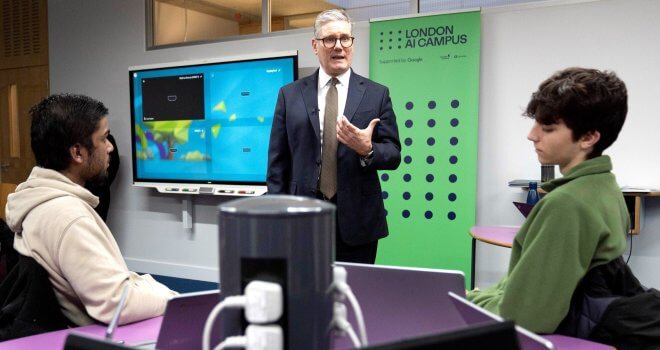How To Move Visitors Around Your Event Space, Without Treating Them Like Cattle

An event space can service many functions. It may be host to a wonderful convention that draws people from miles around, and often from abroad. It may be a place for a pensive art showcase, or for a business demonstration. It could be the place to present artwork, or to potentially curate an experience that is unique and only in town for the weekend.
As an event planner in charge of said premises,you truly do have your work cut out for you. However, nothing will be as complex to manage as the people who come to attend said event. They are the most complex, valuable, impressionable, and communicative resource you will manage through these halls at this time.
However, viewing them as a resource can have its own set of problems in the first place. This means that whatever efforts you implement will need to be well-considered and developed in the most careful showcase of all.
The first and perhaps most major problem – how can you ensure people move around your event space or premises well, without feeling as though they are being treated by cattle? This often goes for art galleries, malls, the aforementioned conventions and many other setups that may have relevance to your operation.
Thankfully, with the following advice in tow, this kind of inquiry will not only be satisfactorily achieved, but it will help your business thrive to the degree that it deserves to:
Remain Accommodating
Remaining accommodating to those who visit your space is a worthwhile task. Manners are free. Welcoming someone, giving them a free event guide, helping them find their bearings from an informational desk can all be excellent methods of helping someone feel comfortable in the space. If they feel they are not being stared at by the suspicious eyes of your security or as if they are out of place, they will relax and behave within the rules and permissive offerings you have made.
If someone decides to misbehave or ignore your polite instructions after this, then you know you may have a problem on your hands. But it’s always up to you to make that first contact and to ensure that the directions are well-intentioned and carefully applied to begin with.
Polite Yet Direct Signs
Polite yet direct signs can make a world of difference when it comes to managing the flow of people. For example, a ‘keep off the grass’ sign is direct, but a ‘please, keep off the grass’ sign is much more careful and competent, and will result in a friendlier response, and a higher chance of compliance.
You could use these alongside custom wristbands that are color-coded to different areas of the event. This way it’s really easy to subtly direct guests without needing to say anything, and if at any point in the event, you need to switch it up, you can simply make an announcement to guests wearing ‘X’ wristband.
Additionally, ensuring that any signs you do have are always visible from any point of the event space is important. Getting lost should not be a possibility.
This is important if your event space has many floors, staircases, and disjointed corridors. Additionally, in spaces such as a hotel, attendees must be crystal clear about where they are permitted to go, and where the confines of the event space end. You can help define this more appropriately through the use of:
Borders & No-Go Areas
It’s also important not only to guide your attendees in the right directions, but to prevent them from accessing areas they are not supposed to see. This is for many reasons. Keeping tight security means being able to keep an official event space designated for certain categories of people, such as staff and attendees. Your insurance might rest on this, you may not wish for your behind-the-scenes areas to be open for many clear reasons, or perhaps you have valuable items that could be the victim of thievery.
No matter your reasons, they are likely valid. This means that segmented borders and no-go areas is important. It might be best helped through the use of carefully placed stanchions, especially if wishing to keep a minimum distance between artwork and the attendees viewing it. These can also be set up to direct queues in a certain direction, or to completely block off certain corridors. Additionally, signs with clear symbolism and direction can be a great means of helping someone understand an area is not to be traveled to. A palm atop a red hexagon symbol is often a universal sign for ‘stop,’ indicating that access to a certain area is not permitted.
But this may not be the only measure you need. For everything else, you may also use:
Ushers & Security
Ushers are there to help you keep on top of the movement of people. They may serve as personable guides, someone who can help refer lost children to a safe holding area while the parents are contacted, as well as reporting security issues or ill behavior they might notice. Additionally, they can serve as an authority when directing people or helping them understand why they need to go a certain way.
Past that, this is where security staff come in. No matter how well-meaning the event is or how harmless the demographic (such as children) that will be in major attendance, it’s important to have many security members there. They must be communicating with one central framework and directed by a centralized staff in the security room. They are there to look for suspicious behavior, to de-escalate conflict, to throw misbehaving people out or to suppress and arrest dangerous attendees.
Unfortunately, this can occur, especially at events where alcohol is present. Additionally, important checks such as baggage inspections and metal detectors can ensure no one is bringing in anything untoward or unnecessary into the event space itself.
The use of excellent-coverage security cameras, a tannoy system to dispel a quick message, a heavily practice fire safety drill and easy transition for the evacuation plan and also a confidential reporting system to allow attendees the potential of directing your attention to a suspicious figure can all be incredible insights that make a true difference to how safe and worthy your event is.
With this advice, you’re sure to run a fantastic event time and time again, keeping the attendees cared for, directed and protected without treating them like cattle.




